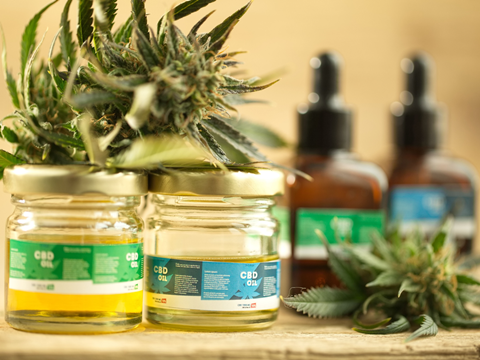
A study conducted on cannabis-based products sold in Portugal has revealed “significant discrepancies” between the claims made on their labels and their actual cannabinoid compositions, with some containing higher concentrations of CBD than advertised and raising concerns for consumer safety.
Cannabis-based products are becoming more widely available in stores and online, with cannabinoids like THC and CBD thought to have therapeutic effects. Yet the researchers caution that the extent to which these products undergo rigorous control to determine their cannabinoid concentration is still unknown – and they believe that the cannabinoid content listed on a product’s label is “often” inaccurate, which can lead to such worst-case scenarios as road or occupational accidents if taken incorrectly.
As such, the study investigated six beverages – three beers, two iced teas, and one carbonated beverage – six herbal samples, ten oils, and nine semi-solid cosmetic products sold in pharmacies and street shops in Portugal. Citing a fully validated method of high-performance liquid chromatography and a diode array detector, the researchers say that most of the products sampled contained lower concentrations of cannabinoids than the label suggested, with little on-pack information present to begin with.
None of the sampled beverages contained detectable cannabinoids, for example, despite the word ‘cannabis’ appearing repeatedly on their labels.
On the other hand, a difference was noticed between the cannabinoid compositions listed on the labels of some products and their actual CBD concentrations. One oil sample was said on its label to contain 5% CBD, 5% CBG, and 0% CBN; yet it was found to contain 7.50%, 5.80%, and 0.06%, respectively. Another only mentioned the presence of CBD on its label, but testing revealed that it constituted 0.07% THCA-A.
“These inconsistencies raise serious concerns regarding consumer safety and informed decision-making,” the researchers state. “Moreover, our findings underscore the need for stringent regulation and standardized testing protocols to ensure the accuracy and safety of cannabis-based products.”
Currently, Portuguese law permits pharmaceuticals, preparations, and other cannabis-based substances like Sativex mouth sprays “as long as they obey guidelines and prerequisites associated with the cultivation process, preparation, and introduction into the marketplace”. Nevertheless, control measures vary between countries as the use of cannabis in medicinal practice becomes more popular.
In similar news, GS1 recently cautioned that mislabelled or unclear food packaging has caused 56% of consumers with food allergies to suffer an allergic reaction. It suggests the use of next-generation barcodes as a means of instantly updating important product information.
We also spoke to Geoffrey Tarret, software solutions sales engineer at Markem-Imaje, about the EU-wide wine labelling rules that came into force in December 2023; these require all wines made or sold in the EU to have all their ingredients and nutritional information listed on the bottle. He also advocated for the adoption of advanced product coding technology amongst winemakers and labellers, believing they would become “better placed to meet the regulatory requirements of the future”.
If you liked this story, you might also enjoy:
How are the top brands progressing on packaging sustainability?
Sustainable Innovation Report 2024: Current trends and future priorities
Reuse vs. single use – which is better for the environment?
The ultimate guide to global plastic sustainability regulation












No comments yet